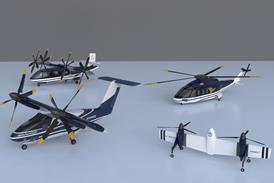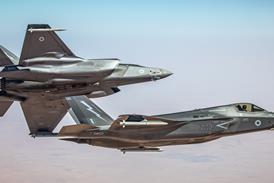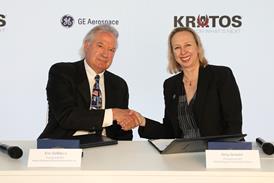Over a year after China's bloated aerospace industry was split into two, with the promise of further internal restructuring and increased competition to come, little evidence of progress has emerged.
The split was intended to foster competition within the industry, forming two new aerospace giants: China Aviation Industries I (AVIC I) and AVIC II. The companies have since continued to pick up co-operative deals with foreign manufacturers in the hope of boosting their technological capabilities. They are also continuing to pursue studies into an indigenous regional aircraft, and programmes to upgrade existing types to make them more attractive to the market.
On the military front, efforts by AVIC I subsidiary Chengdu Aircraft to produce the long-awaited FC-1/Super 7 light fighter and the advanced J-10 continue, although more attention and energy has been focused on co-operation with Sukhoi, including licence manufacture of the Su-27SK/J-11 fighter at Shenyang and China's order for 60Su-30MKK thrust-vectoring aircraft, which could also lead to licensed manufacture of this type.
Shenyang has a licence to produce up to 200 Su-27SKs, signed in 1996 after the People's Liberation Army Air Force (PLAAF) had already bought 50, including about 10 tandem, two-seat Su-27UBKs. The first of the licence-produced aircraft flew from Shenyang in 1998, and observers say the programme's sheer scale calls into question the need for the J-10. Nor has the PLAAF shown any inclination to order the much-delayed FC-1, despite continued interest from Pakistan for an order for 150.
With these programmes crawling ahead, the pace of restructuring within the industry itself remains sluggish. Any assessment of the effects of restructuring is hampered by lack of transparency and tight-lipped Chinese officialdom. Industry observers maintain that AVIC I and AVIC II" compete with each other significantly" for civil, defence and maintenance contracts.
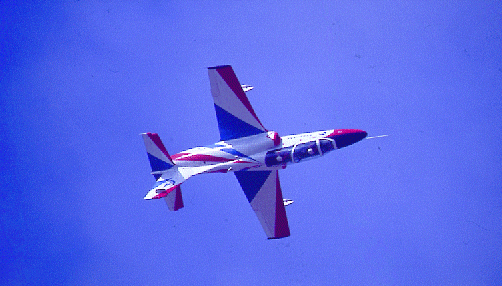
AVIC I, the larger of the siblings, encompassing 104 enterprises, absorbed all China's military aircraft and air weapons programmes except those developed by Nanchang Aircraft Manufacturing: the K-8 jet trainer and Q-5 Fantan strike aircraft. It also acquired 31 of China's 34 aerospace research centres.
AVICII absorbed 79 enterprises and fewer employees - 220,000 compared with AVIC I's 281,000 - and officials declared that only about 11% of its business is in the aerospace field. AVIC II also absorbed helicopter and general aviation production capacity.
Cutting capacityThere is some overlap in the capabilities of the two companies: both have civil turboprop programmes (the Xian Aircraft Y-7 twin comes under AVIC I, while the four-engined Shaanxi Aircraft Y-8 belongs to AVIC II), engine manufacturing and airborne systems capabilities. But their differences are more conspicuous.
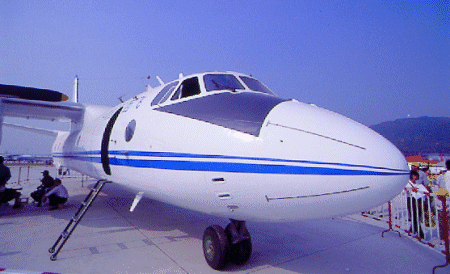
Soon after the split, both AVICI and AVIC II were talking about the need for internal changes. AVIC I director general of marketing and international co-operation Tang Xiaoping said that within two years the workforce would be cut and some plants spun off into joint ventures or sold.
At the same time, his AVIC II counterpart Cui De Gang, said: "We will reduce the number of aviation employees. We will merge some plants, and introduce early retirement."
But, as industry observers point out, these kinds of changes in China are government driven, and must be government-approved. The state currently prefers to keep the industry in its overweight form, rather than generate unemployment.
"The system [in China's industry] is not operated for stockholders - the system is input/output driven," says one analyst. And right now, the industry is focused on sucking in what technology it can, while many of the more ambitious indigenous development programmes trumpeted in recent years fail to materialise.
There is no shortage of foreign aerospace manufacturers willing to deal with China in the hope of positioning themselves to take advantage of anticipated growth in the economy of the world's most populous nation.
Engine maker Pratt & Whitney Canada says it expects the number of its engines in China to "more than double this year". With the order from Hainan Airlines for 19 Fairchild Dornier 328JETs, Changan Airlines' order for three Bombardier Dash 8-Q400As and the anticipated entry-into-service of the Xi'an Aircraft MA 60 - an upgraded derivative of the P&WC-powered Y7-200A turboprop - P&WC's position in the China market is growing stronger.
Strategic capabilitiesRecognising that aerospace is a strategic industry in China and "industrial co-operation is required" to secure contracts, P&WC has a joint venture there, called South P&W Aero-Engine. "We are already seeing the strategic benefit of this joint venture with the increased opportunities," says P&WC area manager Robert Wu.
P&WC parent United Technologies has also sponsored materials and production research projects at aeronautical research institutes in Beijing through US subsidiaries Pratt & Whitney and Sikorsky. Not to be outdone, rival engine manufacturer Rolls-Royce has its own sponsorship programme for aero-engine research and development work in China.
In another technology-acquisition effort, construction has recently begun on a composite parts manufacturing centre near Beijing, to operate as a joint venture between Boeing, Hexcel, and AVIC I. The venture is to be called BHA Aero Composite Parts, and is set to deliver its first parts - initially fairings, access doors and door liners - in the fourth quarter of 2001.
AVIC civil aviation market forecasts have predicted 8% traffic growth in revenue passenger kilometres up to 2008, followed by 9.2% growth up to 2018. Airbus Industrie forecasts are a little more modest, predicting average 7.5% passenger traffic growth over two decades. But Airbus' forecast of demand for new aircraft in China is more upbeat than AVIC I's: the European manufacturer anticipates the need for 1,587 new aircraft of 80 seats or more between 1999 and 2018, while AVIC I says 1,474 new aircraft will be required, with 399 of these seating fewer than 80 passengers.
There is still no indigenous commercial aircraft programme in China that would allow the AVICs to take advantage of this anticipated boom in the civil aircraft market. Studies are continuing on the feasibility of a Chinese regional jet programme, following the collapse of the MD-90 TrunkLiner programme and China's attempt to be involved in the AE31X, although such a programme would seem to make little commercial sense globally, given the number of regional jets already under development around the world.
The 1992 TrunkLiner deal was intended to cover the production of 40 MD-80/MD-90 aircraft at AVICI subsidiary Shanghai Aviation Industrial (SAIC), but was renegotiated in 1994 for 20 MD-90s to be built in China, and another 20 at McDonnell Douglas' (now Boeing's) Long Beach plant. Chinese production of the aircraft was slashed to two airframes by Beijing in 1998, citing low demand. Boeing's decision to kill most former McDonnell Douglas programmes after it took over the company in 1997 also undermined the project.
The two airframes built at SAIC were completed last January, and both were certificated by March, but had no customer willing to take them. In September, they were finally assigned to China Northern Airlines, after the Chinese Government initially tried to place the aircraft with all-Boeing 737 operator Shenzhen Airlines, which was reluctant to take them. With the two new aircraft, China Northern's MD-90 fleet has increased to 10 aircraft.
Market potentialAnglo-Italian helicopter manufacturer AgustaWestland has pushed to exploit this potential by signing a deal earlier this year with AVICII to co-operate on the Chinese Medium Helicopter Programme (CMHP) to develop a 5.5t helicopter for military and civil applications. AgustaWestland is also understood to be close to signing a deal on licence production of the A109K2 twin - an uprated version of the A109 Power, which has already been sold to police in the Dalian municipality.
AVIC IIwill build the CMHP's airframe, while AgustaWestland will provide the transmission and technical support. The company is also considering offering AVIC II production sub-contracts to smooth the way to future co-operation.
China's industry certainly needs such deals with foreign manufacturers to help establish a sound technological base. But it may take more time and effort, not to mention independence from the state, for it to begin to think and operate in the same way that most of its would-be partners do.
Source: Flight International


